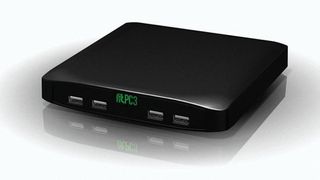How Mint became one of the most popular Linux distros
We speak to the creator of Mint, Clem Lefebvre
Here comes Muffin
"We forked parts of Gnome 3 because we couldn't use them as they were (they didn't do what we wanted) and because the Gnome developers had no interest in implementing what we needed. As an example, the Linux Mint desktop has had a bottom panel since 2006. Gnome 3 has a top panel. Not only is the location of that panel non-configurable, it is on top 'by design'. Gnome 3 was 'adjusted' and 'hacked' with a collection of 'extensions' for a while, and when the time came to build something solid and functional, the Gnome 3 extensions weren't a valid solution. So the Shell was forked into Cinnamon, and then the window manager was forked into Muffin."
Mint hardware store

Meet the MintBox
As well as the abundant following that Linux Mint has accumulated over the last few years, we're beginning to see a rise in the number of PCs being sold with Mint as their primary operating system. For starters, if you go to the Linux Mint home page, then browse to the Project section, followed by Store, you will be greeted with Live DVDs and USB sticks, T-shirts, stickers, badges and, more importantly, computers, laptops and the MintBox.
Looking first at the Computers and Laptops section, we see a number of computers with Mint pre-installed from the ThinkPenguin catalogue, including an all-in-one setup, a standard desktop, a couple of mini-PCs and a home theatre setup. The Laptop area forwards us again to ThinkPenguin, with a number of laptops pre-installed with our favourite operating system.
Although these offerings are all fine and well, almost any reasonably priced PC can be manipulated into becoming a Linux Mint machine. The real star of the show, in this particular case, is the MintBox.
MintBox
Working in partnership with CompuLab over the last year or so, the Mint team are now the proud parents of a very versatile, and reasonably powerful little unit that comes in two distinct flavours: a standard unit that comprises of 4GB RAM, an APU G-T405N 1GHz dual core CPU with a Radeon HD6290 and a flat, black metal case; and a Pro unit that houses 8GB RAM, an APU G-T56N 1.65GHz CPU with a Radeon HD 6320 and sports a fetching black metal ribbed case.
Both these units are fanless, with standard features shared between the two that include a 250GB HDD, dual-head HDMI 1.3/DisplayPort, gigabit Ethernet, S/PDIF 7.1 channel audio, 2X USB 3.0 ports and 2X USB 2.0 ports; 2X eSATA ports, WiFi 802.11 b/g/n (with dual antennae), a bay to house a 2.5-inch SATA HDD, 2 mini PCIe sockets with a single mSATA and a Serial RS232 port.
Get daily insight, inspiration and deals in your inbox
Get the hottest deals available in your inbox plus news, reviews, opinion, analysis and more from the TechRadar team.
Amazingly, CompuLab has managed to squeeze all of this into a unit that's 6.3x6.3x1 inches for the standard, and 7.5x6.3x1.6 for the pro; with an emphasis on the units being easy to open up and upgrade.
The applications for such a tiny unit are wide and varied; everything from an industrial, or shop-based work unit, to educational and the home lounge-based media centre can be catered for, especially since these Mint-powered boxes are also VESA mountable and come with an incredibly low power consumption (9W for the standard and 18W for the pro).
Clem and the team are proud of the MintBox, and rightly so, although it does run to $476 plus VAT and shipping (roughly £297) for the standard, and $549 (£343) for the professional model. They aren't the cheapest units to grace the market, but they are terrifically well built, CompuLab being a world leader when it comes to designing and manufacturing industrial hardware.
Obviously, this endeavour has opened the gates to a more lucrative option for Linux Mint as a company; however, it's worth noting that Mint will receive a 10% cut from the sale of each device. And although the MintBox is far from being the first Linux distro, or even the first Ubuntu-based distro, to be sold pre-installed on a PC, it's certainly unique in its design, connectivity and appeal.
Most Popular
